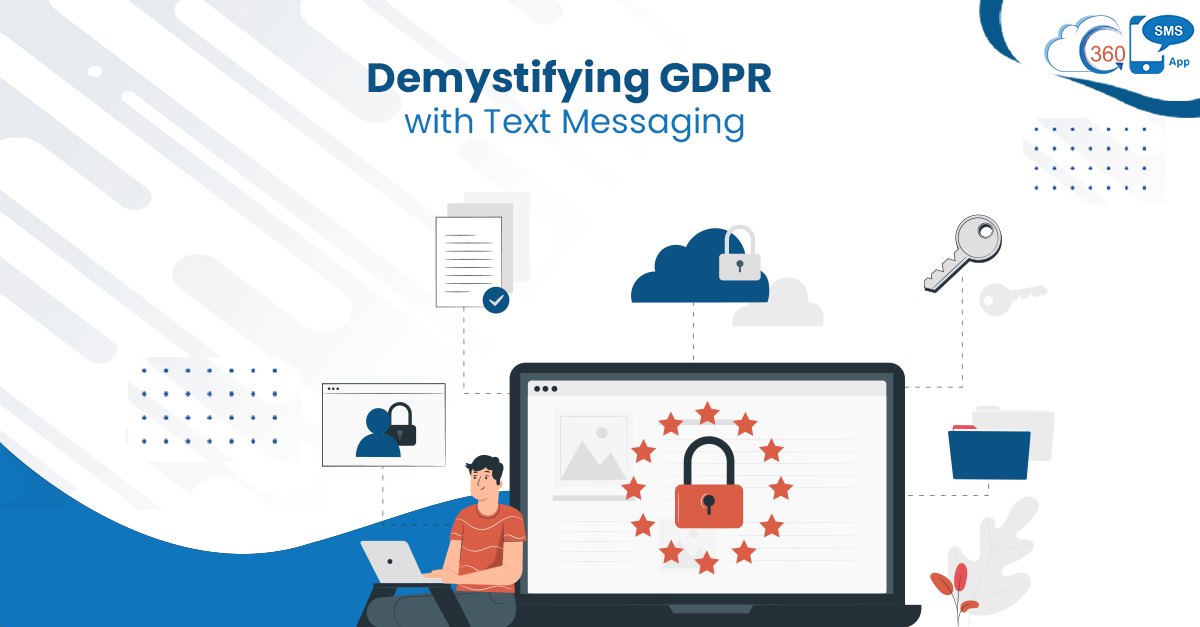GDPR legislation came into effect on 25 May 2018. After GDPR came into effect, organizations don’t necessarily need to re-request the customers for their consent to send them text messages. But it’s necessary to understand the basics of GDPR to stay compliant.
The very basic requirement of GDPR is that organizations must process the customer’s personal data lawfully.
Table of Contents
What is Personal Data Processing?
Personal data processing includes collecting, recording, storing data, and performing operations on it. The data could be in the form of text, images, video, or audio. Some personal data of customers is more sensitive. So, GDPR applies additional rules to the collection and use of such data.
Sending an SMS or email to customers within the database would be considered as processing. The two most lawful acts of processing data are consent acquisition and the legitimate interests of the customers.
According to GDPR, written consent must be voluntary, not forcefully. Also, organizations must inform customers which information will be stored and how they will use it. Intentions of collecting information must be clear in a simple and easy-to-understand language.
To be precise, users must understand what they will get in exchange for opt-in or out-at will, having full authority over their data and its usage by third parties.
On the other hand, when it comes to a legitimate interest, organizations can include the interest of selling or cross-selling products. Also, they must ensure that desired interest is only achievable through messaging and not any other medium. More importantly, your personal interest to send a text should not impact the individual’s interests, rights, and freedom.
Data Security
This is another vital principle of GDPR. The first and foremost priority of organizations is to keep the customer’s data safe. The level of security is directly proportional to the type of data and quantity. So, organizations can take some measures to protect the data. They should lay emphasis on encryptions to ensure their computers, tablets, and mobile phones safeguard all personal data.
Conclusion
Being compliant with GDPR, organizations can collect and use people’s personal information in a legalized manner. Also, it instills trust in customers to share their personal data without being skeptical, and their data is safe. This way, not only organizations prevent themselves from high penalties but can add transparency in the process.
Recent Blogs

Best SMS App for Zoho CRM
Listen to this article Zoho CRM is a powerful platform for managing leads and customers, offering capabilities such as pipeline…

Engage 24/7 and Capture Quality Leads with an AI-Powered Chatbot
Listen to this article Engage 24/7 and Capture Quality Leads with an AI-Powered Chatbot Good customer service is always about…

Real-time AI Call Translator That Breaks Barriers & Wins Deals
Listen to this article Client interaction is pivotal to any business, be it B2B, B2C, or any business model. It’s…













